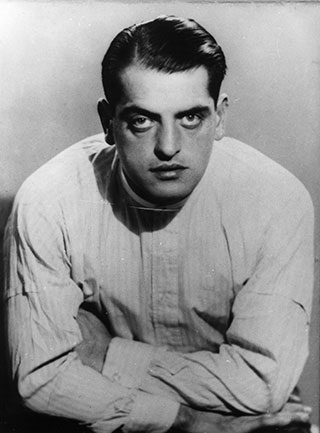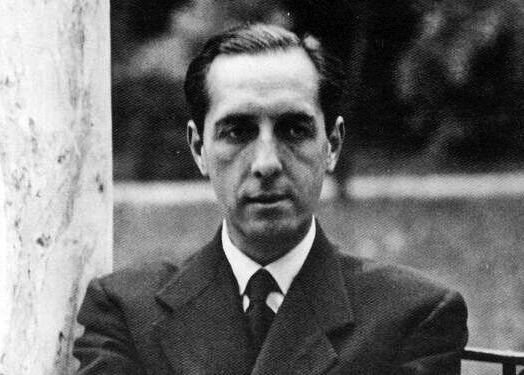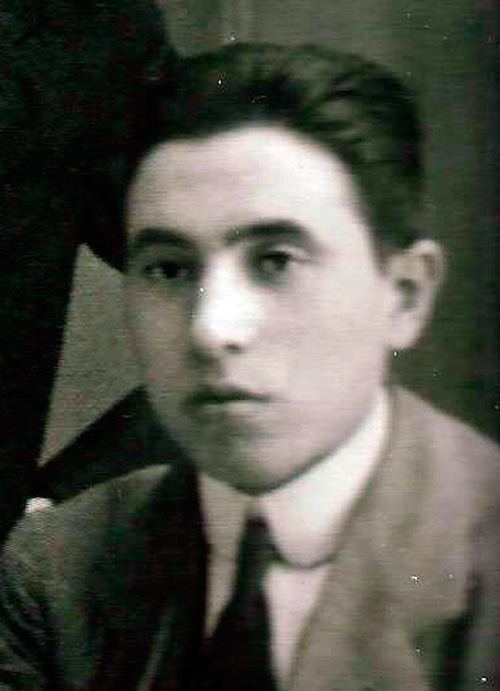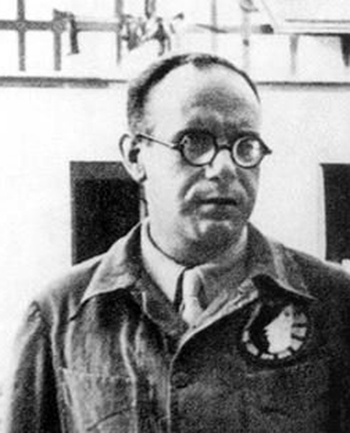Spanish film director, companion and friend of Federico García Lorca during the early years of the Residencia de Estudiantes (Students’ Residence) in Madrid.
Luis went to primary and secondary school in Zaragoza. At the age of 17 he went to Madrid and stayed at the Residencia from 1917 to 1924. In that period he was interested in naturism, he had a spartan diet and clothing and showered with ice water, practiced sports, especially pole vaulting and boxing. These were the years of the artistic avant-garde and this was the spirit that was breathed among the young artists of the Residencia. Buñuel, Dalí and Lorca formed a friendly but unstable triangle in those years.
At the Residencia, Buñuel organized a movie forum and made his first stagings, founded the Orden de Toledo (an association of young avant-garde artists who used to travel from Madrid to Toledo) and participated in all the amusements impregnated with the avant-garde humor and play of the moment. Later, in 1928, Ernesto Giménez Caballero, director of La Gaceta Literaria magazine, founded the Spanish Movie Club and Buñuel continued to be in charge of obtaining films of interest from Paris, as well as sending news of French premieres to the magazine. In these early years, Luis published poems and short stories in various magazines of the time.
He traveled to Paris with a letter of introduction from the pianist Ricardo Viñes and soon joined the surrealist group. In 1926, he was in charge of the staging of Master Peter’s Puppet Show by Manuel de Falla for its premiere in Amsterdam. Perhaps encouraged by the success, the following year he composed his only avant-garde theatrical work in collaboration with Pepín Bello, Hamlet. It was performed at the Café Sélect in Paris.
Federico attended the half-secret screening of L’Âged’or, on which he commented that it contained “magnificent things.”
Very soon, however, he sees clearly that his path is cinema and offers to work with Epstein in order to learn. He was assistant director on a couple of films and also began contributing to film and art publications.
In January 1929, he spent a few days with Dalí in Figueres and they work together on the script of Un chien andalou, which began shooting on April 2, financed by Buñuel’s mother. It premiered on July 6 at the Studio des Ursulines, in Paris, to great public acclaim, and was shown for nine months at Studio 28. On account of this film Buñuel was accepted into the surrealist group that met at the Café Cyrano, among whose members were Marx Ernst, André Breton, Paul Éluard, Tristan Tzara or Louis Aragon. A few months later, with Dalí, he tried again to write the script of L’Âged’or but the collaboration was no longer the same and when Dalí discovered that Buñuel had finished the film on his own he felt betrayed and distanced himself from him. The premiere was on November 28, 1930. The film was eventually banned and confiscated after the cinema where it was screened was attacked by extreme right-wing groups. It was not distributed again in New York until 1980.
In 1930, he was hired by Metro Goldwyn Mayer as an “observer”, which allowed him to meet personalities such as Chaplin and Eisenstein. In 1931, he returned to Spain for the half-secret screening of L’Âged’or. Federico was there, accompanied by Carlos Morla Lynch. The diplomat left testimony of that night in his diary. Federico, he explains, commented to him at the end that the film contained “magnificent things.”
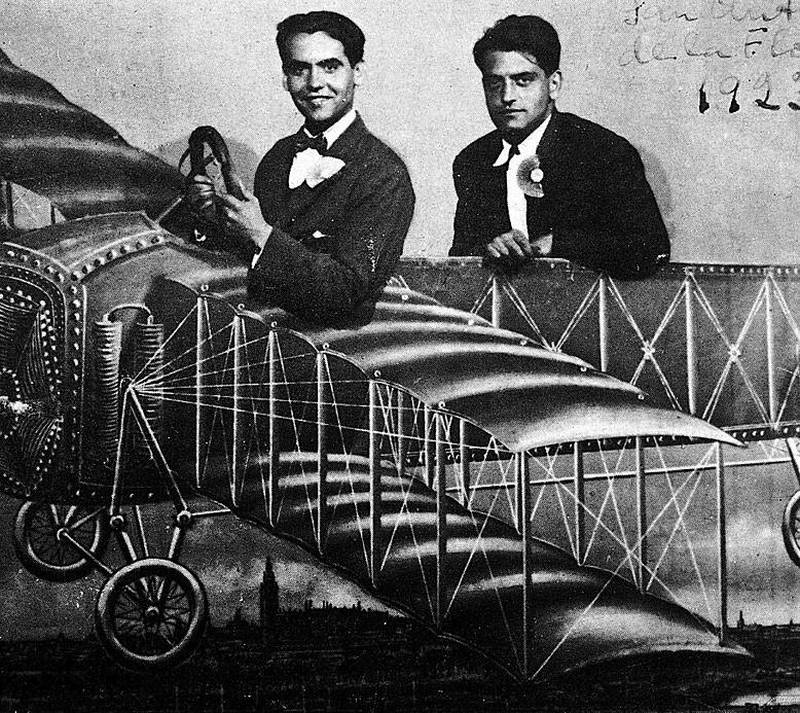
In 1932, Buñuel attended the first meeting of the Association of Revolutionary Writers, separated from the surrealist group and joined the French Communist Party. He was hired by Paramount and later, in Spain, he began to shoot Las Hurdes, Land without Bread, a descriptive documentary about the poverty in which the inhabitants of this town in Extremadura lived. The film was censored for being considered denigrating for what it showed of Spain. In 1933, he signed a manifesto against Hitler, which was also signed by Lorca, Alberti and Sender.
In 1934, he married Jeanne Rucar, professional actress and gymnast. They had two sons, Jean Louis and Rafael. In the same year he attended the premiere of Yerma at the Teatro Español, which he found boring.
After the coup d’état, Buñuel remained loyal to the Republic. In September, the Minister of Foreign Affairs sent him to Paris as ambassador Araquistáin’s man of confidence. In 1937, he was in charge of supervising the Spanish pavilion at the International Exhibition in Paris and the following year he traveled to Hollywood to supervise two films about the Spanish war.
Buñuel was in 1934 at the premiere of Yerma at the Spanish Theater, which he found boring.
With hardly any resources, he accepted the position of supervisor and chief editor of documentaries for the Coordination of Inter-American Affairs, which was directed by Nelson Rockefeller, at the Moma in New York. He had to select anti-Nazi propaganda films. He was fired in 1943 following the publication of the book The Secret Life by Salvador Dalí, in which the painter branded Buñuel as an atheist and a man of the left.
Buñuel began his Mexican adventure with two projects. The first was a failure (Gran Casino, 1947) but the second (The Great Madcap, 1949) was a great commercial success. Buñuel, encouraged by the repercussion, proposed to shoot The Young and the Damned. The well-off Mexicans did not like to see the misery and poverty of their people reflected on the screen. The film, however, won an award at Cannes in 1951 and gained international prestige.
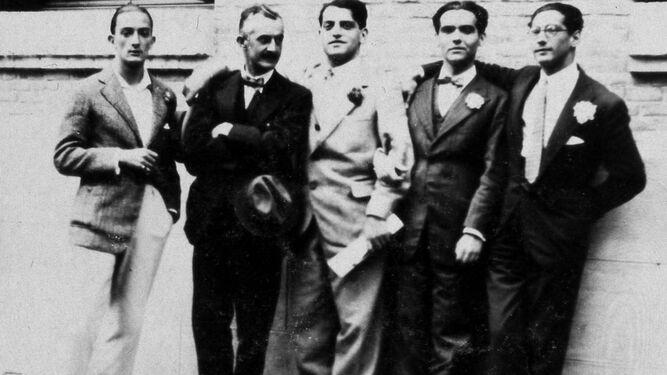
Buñuel is blacklisted by the United States for his opposition to the atomic bomb.
In 1960, he returned to Spain to direct Viridiana, a film that won the Palme d’Or at Cannes, although the Spanish censors, always on the lookout, banned it and did not lift the punishment until 1977.
In 1966, again in France, he released Belle de jour, which won the Golden Lion at the Venice Film Festival.
In 1970, in Spain, he shot Tristana, starring Catherine Deneuve. In 1972, he became the first Spanish director to win the Oscar for best foreign language film for The Discreet Charm of the Bourgeoisie
